Systemic Deficiency of GHR in Pigs leads to Hepatic Steatosis via Negative Regulation of AHR Signaling
- PMID: 34803486
- PMCID: PMC8579453
- DOI: 10.7150/ijbs.64894
Systemic Deficiency of GHR in Pigs leads to Hepatic Steatosis via Negative Regulation of AHR Signaling
Abstract
Laron syndrome (LS) is an autosomal recessive genetic disease mainly caused by mutations in the human growth hormone receptor (GHR) gene. Previous studies have focused on Ghr mutant mice, but compared with LS patients, Ghr knockout (KO) mice exhibit differential lipid metabolism. To elucidate the relationship between GHR mutation and lipid metabolism, the role of GHR in lipid metabolism was examined in GHR KO pigs and hepatocytes transfected with siGHR. We observed high levels of free fatty acids and hepatic steatosis in GHR KO pigs, which recapitulates the abnormal lipid metabolism in LS patients. RNAseq analysis revealed that genes related to the fatty acid oxidation pathway were significantly altered in GHR KO pigs. AHR, a transcription factor related to lipid metabolism, was significantly downregulated in GHR KO pigs and siGHR-treated human hepatocytes. We found that AHR directly regulated fatty acid oxidation by directly binding to the promoters of ACOX1 and CPT1A and activating their expression. These data indicate that loss of GHR disturbs the ERK-AHR-ACOX1/CPT1A pathway and consequently leads to hepatic steatosis. Our results established AHR as a modulator of hepatic steatosis, thereby providing a therapeutic target for lipid metabolism disorder.
Keywords: AHR; GHR; Laron syndrome; hepatic steatosis.
© The author(s).
Conflict of interest statement
Competing Interests: The authors have declared that no competing interest exists.
Figures
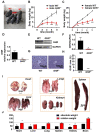

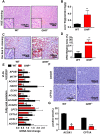

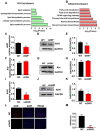
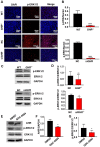
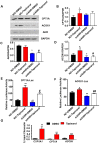


Similar articles
-
Growth hormone receptor-deficient pigs resemble the pathophysiology of human Laron syndrome and reveal altered activation of signaling cascades in the liver.Mol Metab. 2018 May;11:113-128. doi: 10.1016/j.molmet.2018.03.006. Epub 2018 Mar 15. Mol Metab. 2018. PMID: 29678421 Free PMC article.
-
A novel role for the dioxin receptor in fatty acid metabolism and hepatic steatosis.Gastroenterology. 2010 Aug;139(2):653-63. doi: 10.1053/j.gastro.2010.03.033. Epub 2010 Mar 17. Gastroenterology. 2010. PMID: 20303349 Free PMC article.
-
Hyperhomocysteinemia activates the aryl hydrocarbon receptor/CD36 pathway to promote hepatic steatosis in mice.Hepatology. 2016 Jul;64(1):92-105. doi: 10.1002/hep.28518. Epub 2016 Apr 5. Hepatology. 2016. PMID: 26928949
-
MECHANISMS IN ENDOCRINOLOGY: Transient juvenile hypoglycemia in growth hormone receptor deficiency - mechanistic insights from Laron syndrome and tailored animal models.Eur J Endocrinol. 2021 Jul 1;185(2):R35-R47. doi: 10.1530/EJE-21-0013. Eur J Endocrinol. 2021. PMID: 34048365 Review.
-
Molecular basis of inherited growth hormone resistance in childhood.Baillieres Clin Endocrinol Metab. 1996 Jul;10(3):353-69. doi: 10.1016/s0950-351x(96)80485-x. Baillieres Clin Endocrinol Metab. 1996. PMID: 8853444 Review.
Cited by
-
AhR governs lipid metabolism: the role of gut microbiota.Front Microbiol. 2025 Jan 29;16:1442282. doi: 10.3389/fmicb.2025.1442282. eCollection 2025. Front Microbiol. 2025. PMID: 39944639 Free PMC article. Review.
-
Succinylation enables IDE to act as a hub of larval tissue destruction and adult tissue reconstruction during insect metamorphosis.Sci Adv. 2025 Feb 7;11(6):eads0643. doi: 10.1126/sciadv.ads0643. Epub 2025 Feb 5. Sci Adv. 2025. PMID: 39908369 Free PMC article.
References
-
- Alessia D, Vivian H, Metherell L A, Irène N, Cecilia C H, Clark A. et al. Evidence for a continuum of genetic, phenotypic, and biochemical abnormalities in children with growth hormone insensitivity. Endocr. Rev. 2011;32:472–494. - PubMed
-
- Brooks A J, Wooh J W, Tunny K A, Waters M J. Growth hormone receptor; mechanism of action. Int J Biochem Cell B. 2008;40:1984–1989. - PubMed
-
- Vanderkuur J A, Butch E R, Waters S B, Pessin J E, Kun-Liang G, Christin C S. Signaling molecules involved in coupling growth hormone receptor to mitogen-activated protein kinase activation. Endocrinology. 1997;138:4301–4307. - PubMed
Publication types
MeSH terms
Substances
LinkOut - more resources
Full Text Sources
Research Materials
Miscellaneous

